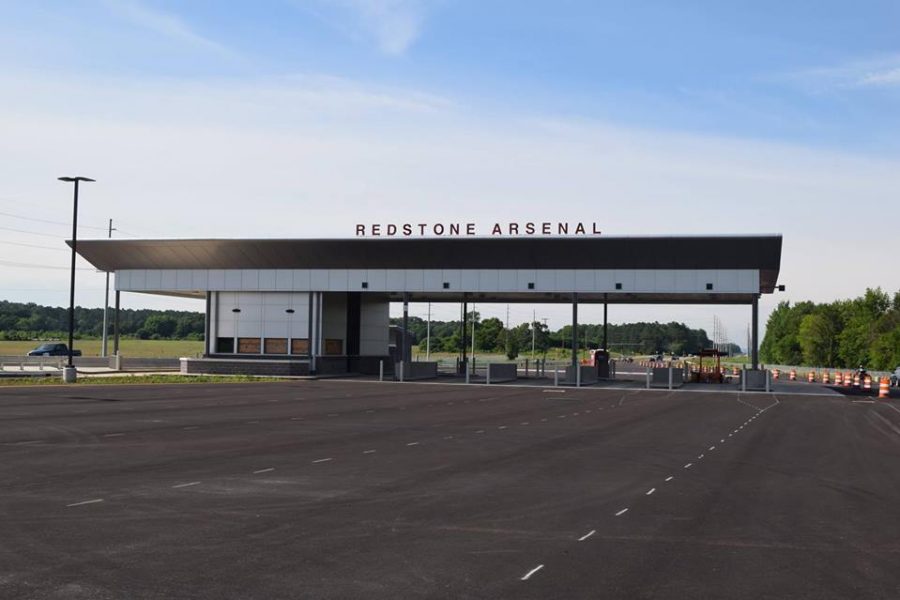The Department of Defense Office of Inspector General will review the Department of the Air Force’s decision to base U.S. Space Command headquarters at Redstone Arsenal, Ala., according to a Feb. 19 memo.
The choice of the Army’s Redstone Arsenal—green-lighted provided it passes an environmental review—has already raised objections.
Business groups and elected officeholders from Colorado released statements in January and February criticizing the selection, questioning why the process was stopped and then restarted, and claiming they had inside information that former President Donald J. Trump had personally intervened, slighting their state.
The review will gauge how well the Air Force “complied with DOD and Air Force policies during the location selection process; used objective and relevant scoring factors to rank the six candidate locations; and calculated costs and other scoring factors accurately and consistently,” Assistant Inspector General Randolph R. Stone wrote in the memo addressed to Acting Secretary John P. Roth.
The military’s 11th combatant command, which was created in 2019, is provisionally based at Peterson Air Force Base, Colo., until a permanent headquarters is named. Peterson was home to Air Force Space Command until that command formed part of the Space Force during the organizational reshuffling to create the new service. Once it’s fully stood up, U.S. Space Command could amount to about 1,500 jobs, though it’s unclear how many of those jobs will be new hires or have been formerly part of the Air Force command.
Local officials and outside experts have characterized the new command as moving from its long-established home. And, Colorado’s odds seemed pretty good at first.
Four of the six finalists announced in the first list, released under Secretary Heather Wilson in May 2019, were in Colorado. Redstone Arsenal and Vandenberg Air Force Base, Calif., were the other two locations. Wilson left office the same month.
About a year later, Air Force Secretary Barbara M. Barrett announced the Air Force was re-opening the process. Defense Secretary Mark T. Esper said at the time that he wanted to wait until after the November election to announce a selection so the choice wouldn’t be perceived as political.
Twenty-four states turned in nominations, and by November, the Air Force announced a new list of six finalists. Bases in Florida, Nebraska, New Mexico, and Texas replaced three in Colorado and the one in California. Peterson was the lone Colorado base that persisted.
Barrett announced Redstone Arsenal as the preferred location in January. Since then, the selection has evolved into a political tug-of-war, with both sides taking aim at the Air Force’s methodology.
U.S. Rep. Michael Waltz (R-Florida) shed light on the reboot of the selection process in a December 2020 interview with Central Florida’s Spectrum News.
“‘Are you kidding me? Florida is out of the running for a space command?’” Waltz recalled thinking when the first list was released. “Myself, the governor, our senators [and] a lot of our local officials started asking a lot of tough questions about how this decision was made, what’s the process,” said Waltz, an Army veteran. He called the later reversal “huge huge.”
In response to the latest news of the OIG review, U.S. Rep. Doug Lamborn (R-Colorado) called the second selection process “fundamentally flawed” with “defective methodology” that focused on “bean-counting,” according to Feb. 19 statement. He previously criticized the process after having a chance to review “scores,” saying he perceived “significant irregularities in how the metrics were graded.”
Lisa Landes, a spokesperson for the Colorado Springs Chamber of Commerce, said at the time Redstone Arsenal was named that “sources at the White House and the Air Force have confirmed” that the Air Force’s site selection team recommended Peterson but “President Trump ignored their recommendation and selected Redstone Arsenal.”
The Department of the Air Force plans to make its final decision on the headquarters in spring 2023.
